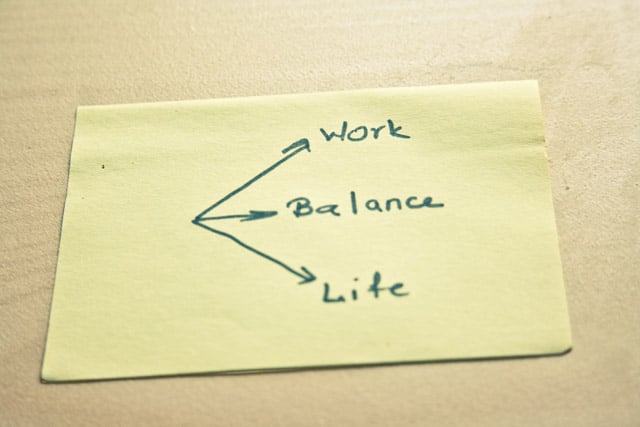
Photo: www.pdpics.com
The gig economy explored
How do we best manage an economy in which many people don’t have a salaried job? Michelle Wright discusses the move away from 9 to 5 employment in the arts.
The way that we work has become very different in recent years. It used to just be musicians and actors who organised their lives in a series of ‘gigs’, but the practice is now becoming the norm for much of the working world. The very notion of the stable 9 to 5 job with a fixed salary each month is becoming rare. So the challenge now is how arts and cultural organisations adapt to accommodate a more flexible workforce. This will require some new thinking.
The change in how we work and how we want to work has been a long time coming. For the current generation of graduates, the so-called millennials, a good work–life balance is at the heart of the equation. Similarly, for those who have undertaken some 20 or 30 years of full-time work, or who want more time with their families and children, organising work through a series of gigs rather than a stable job can seem both attractive and practical.
We will need some new safety nets to help the next generation of freelancers and micro-entrepreneurs plan their future
The ‘gig economy’ has even been highlighted in the US presidential race with Hillary Clinton referring to it in her economic plan: “This on-demand, or so-called gig economy, is creating exciting economies and unleashing innovation. But it is also raising hard questions about workplace protections and what a good job will look like in the future.”
None of this is new for those working in the arts. This has been the reality of working life for years, and with the emergence of more complex portfolio careers for artists and musicians, the need to be savvy in managing life with a degree of entrepreneurial flair has become the norm. The very nature of working as an artist means that we have to tolerate high levels of ambiguity, perform and take risks – many of the hallmarks of entrepreneurship.
A new employment model
It’s clear that this environment might benefit artists, but it’s also not lost on me that for employers it’s becoming a real headache. How do we face the problem of fragmented and disloyal teams who are always on the lookout for the better gig? And on the other side of the coin, how do we persuade artists and musicians that have benefitted from full-time contracts to offer more flexibility to suit different business models and ever more constrained budgets? This approach poses huge challenges for leaders.
Heads of organisations also have much to consider in relation to how they train young people for the jobs of the future. Not only do they not know exactly what these jobs are, they also have no clue what they will look like. If we are going to create stable funding environments and balanced budgets, leaders need a high degree of flexibility, as well as an in-depth financial knowledge. New CEOs will need to create organisational cultures that provide a balance of stability and fluidity, requiring new leadership skills of enterprise and ingenuity.
And while there is something empowering about being your own boss and a bit more in control of your portfolio of work, there’s also something secure about the traditional 9 to 5. How can you plan for the future if you are unsure what the year ahead looks like? Psychologically, that’s a huge amount of ambiguity to tolerate. It’s well recognised that we will need some new safety nets to help the next generation of freelancers and micro-entrepreneurs plan their future.
I wonder if our politicians and opinion formers should now be drawing from the artist community to embrace the overall changes that are emerging as part of the gig economy. Our current systems recognise that you are either an employee or you are not. In the gig economy we need to embrace elements of both.
Preparing for the entrepreneurial economy
It’s also a key question for the entrepreneurial economy. New legislation could undoubtedly burden employers with costs that could ultimately hurt the very best that the on-demand economy can offer. Freelancers aren’t entitled to the minimum wage or to sickness pay. Similarly, planning for retirement becomes a huge headache because you don’t benefit from auto-enrolment. The complexity of what’s involved requires new models of funding and fundraising for the arts and traditional business alike.
Perhaps we simply need to provide more training and support for our new gigging entrepreneurs. Government, banks and pension providers need to recognise this new type of worker and provide products and tax breaks that suit the lifestyle. This can only help our artists too.
Similarly, our schools, universities and conservatoires need to provide a better grounding in how to sustain a career as part of this more ambiguous future. Peer-to-peer support networks become invaluable and we need role models to come forward, those that are making it all work and are happier as a result.
The gig economy should give us choices and freedoms. The debate around it is a once in a lifetime opportunity for artists to lead the agenda and change the rules about how we want to work.
Michelle Wright is the Founder and CEO of fundraising and development enterprise Cause4 and is Programme Director for Arts Fundraising and Philanthropy.
This article is part of a series of articles on the theme Fundraising for the future, sponsored and contributed by Arts Fundraising and Philanthropy.
Arts Fundraising & Philanthropy has just announced an extended programme of one-day training courses from April to June across England.
Join the Discussion
You must be logged in to post a comment.